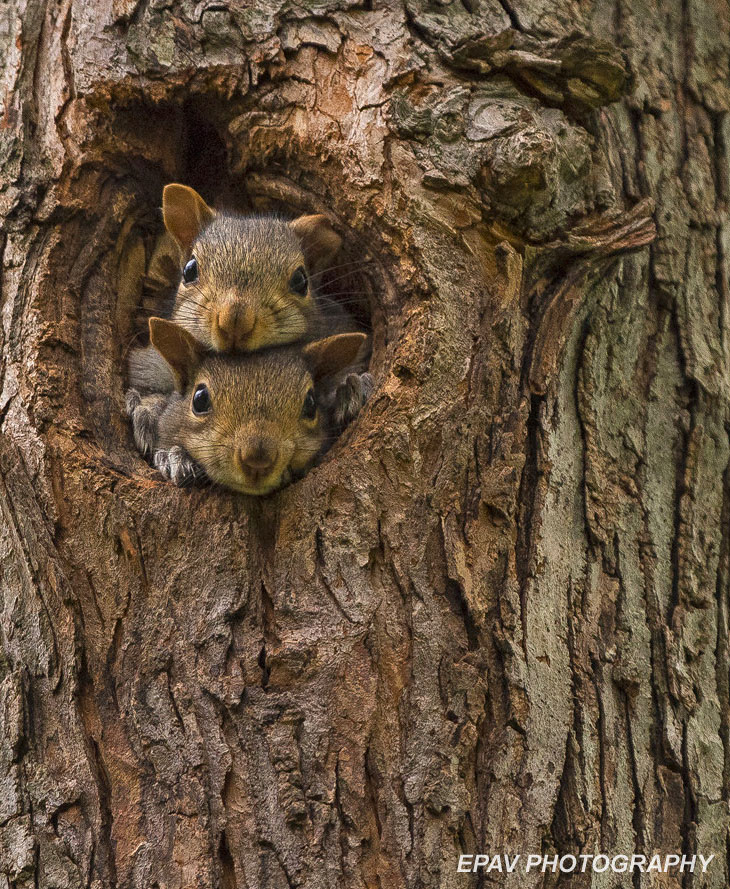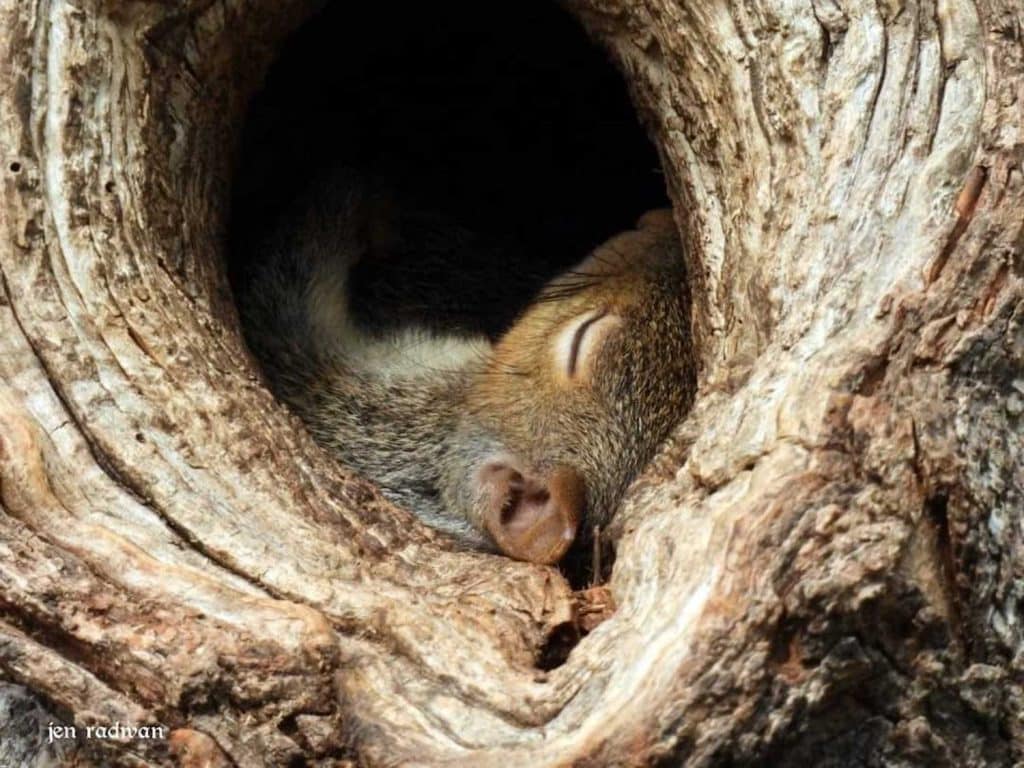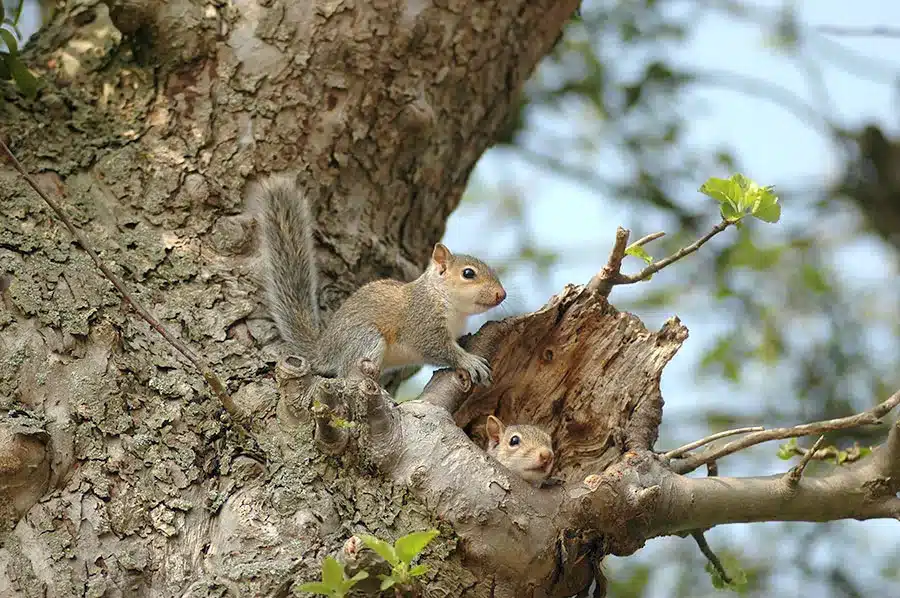Squirrel nests in trees are a beautiful sight, but they can also raise concerns about safety, property damage, and wildlife management. Treeservicewestuniversityplace discusses the factors to consider when deciding whether to remove a squirrel nest from a tree, as well as practical recommendations for homeowners and property managers.
Understanding Squirrel Nests
Understanding squirrel nests is critical for both homeowners and property managers. These nests, sometimes known as dreys, shelter squirrels from predators and harsh weather. Often constructed from twigs, leaves, and other natural materials, squirrel nests vary in size and shape based on the squirrel species and environmental conditions. High up in trees, they often find themselves intricately wrapped around limbs or nestled into hollows. It’s easy to spot a squirrel nest. Often seen as ball-shaped constructions, squirrel nests may appear untidy, but their intricate construction ensures insulation and endurance. Despite their untidy appearance, squirrels methodically construct their nests to provide warmth and protection to their residents. Understanding the characteristics of squirrel nests can help homeowners identify potential nesting sites on their property and make informed management decisions.
Should I remove a squirrel nest from the tree?

There are several considerations to consider when deciding whether to remove a squirrel nest from a tree. If the nest causes a risk to individuals or property, such as falling debris or aggressive squirrels, it may need to be removed.
Factors to consider while removing squirrel nest from tree
When deciding whether to remove a squirrel nest from a tree, various aspects must be considered to ensure an informed conclusion. Safety concerns are crucial, as the nest’s proximity to human activity areas must be evaluated to determine whether it poses any threats, such as falling debris or potential aggressiveness from squirrels protecting their territory. Legal restrictions should also be considered, as some jurisdictions need permits or prohibit disruption of squirrel habitats during breeding seasons. Furthermore, the benefits and downsides of nest removal must be considered. Removing a squirrel nest can help reduce property damage because these nests have the potential to inflict structural damage to trees and structures if left unchecked. Furthermore, it could lessen wildlife conflicts by prohibiting squirrels from nesting.
Pros and cons of nest removal
Pros of Removing a Squirrel Nest
Property Protection: Removing a squirrel nest might help to prevent property damage. Squirrel nests can cause structural damage to trees and buildings if left unchecked. Conflict Resolution: Nest removal may prevent animal conflicts by discouraging squirrels from nesting in inappropriate locations. This can help limit confrontations between squirrels and humans, lowering the danger of property damage or injury.
Cons of Removing a Squirrel’s Nest
Wildlife Disruption: Removing a nest may disrupt squirrels’ natural habitat, potentially displacing them from their homes. This can generate stress for the squirrels, affecting their overall well-being.

Ethical Considerations: Some people may consider nest destruction harsh or unnecessary, especially if the squirrels aren’t causing any harm. When considering whether to dismantle a squirrel nest, wildlife conservation and animal welfare should be considered.
Safe Removal Procedures
When removing a squirrel nest from a tree, prioritize human and wildlife safety. Follow these safe removal techniques to guarantee that the process runs smoothly and responsibly:
Consult professionals: Consider employing expert tree service companies that have experience with wildlife management. They can securely dismantle the nest and relocate squirrels as needed. Before beginning the removal process, evaluate the dangers involved. Look for potential hazards, such as unstable branches or aggressive squirrels, and take the necessary safeguards.
Use protective gear: Wear gloves and other protective equipment to reduce the possibility of injury. Squirrel nests may contain sharp twigs or debris that is dangerous.
Use Caution: If you choose DIY removal, go gently. To avoid accidents, use ladders and other equipment with caution and be aware of your surroundings.
Minimise stress: Reduce stress for the squirrels during the removal process. Avoid making loud noises or making quick movements that may startle them, and handle the nest with care to avoid harming any occupants. By following these safe removal guidelines, you can ensure that the operation is carried out professionally, with a focus on the safety and well-being of both humans and wildlife.
Will removing a squirrel nest harm the squirrels?
The squirrels may be temporarily disturbed when a squirrel nest is removed, but they usually do not suffer any major injuries. Because they are such flexible animals, squirrels may choose different places to live and adapt to changes in their surroundings. But it’s important to take into account things like the presence of baby squirrels in the nest and the accessibility of appropriate habitat in the area. You must manage the matter carefully if there are newborn squirrels in the nest. It is advised to get advice from nearby wildlife rehabilitators or animal control agencies on how to securely relocate the newborn squirrels. When the juvenile squirrels are ready, these experts can help make sure they are well taken care of and returned to the wild. Overall, squirrels are hardy creatures who can adjust to changes in their environment, even though taking down a squirrel’s nest may temporarily uproot and upset them. The impact on the squirrels can be reduced with appropriate attention and care, guaranteeing their safety throughout the nest removal procedure.
How can I prevent squirrels from nesting in my trees?
Try putting these tips into practice to keep squirrels from building their nests in your trees:
Pruning Overhanging Branches: Squirrels frequently hop from adjacent branches or buildings to reach trees. You may reduce the likelihood that squirrels will climb your trees and build their nests thereby pruning overhanging branches.
Install bird feeders that are squirrel-proof and attractive to squirrels, these feeders can serve as a food supply and a place for them to build a nest.
Purchase squirrel-proof bird feeders, which keep squirrels away while enabling birds to use them for food.
Use deterrents: To prevent squirrels from building nests in your trees, use deterrents such as predator decoys, ultrasonic repellents, and motion-activated gadgets. These gadgets use visual clues or auditory effects to deter squirrels from congregating in the vicinity.
Remove Attractants: Keep fallen fruits and nuts, as well as any other food sources, out of your garden so as not to attract squirrels. Tighten up trash cans and compost containers to keep squirrels away from food waste.
Apply fragrance or Taste Repellents: To prevent squirrels from building nests, think about applying fragrance or taste repellents to the trunks or branches of trees. Squirrels find these repellents unpleasant, but they are generally harmless for trees and wildlife. Give Squirrels Alternative Nesting Sites: You might want to think about putting in nest boxes or shelters far from your trees. While still promoting the local wildlife, offering substitute nesting locations will help keep squirrels off your land.
FAQS
Can I lawfully remove a squirrel nest from my tree?
Yes, however, before moving further, it’s crucial to confirm with local laws and secure any required permits. Regarding the removal of wildlife habitats, such as squirrel nests, some jurisdictions may have particular regulations.
Does taking down a squirrel’s nest hurt the squirrels?
Although squirrels are hardy animals that can adjust to new environments, the destruction of their nests may momentarily disturb them. If the nest is home to young squirrels, though, you will need to manage the matter carefully and consult with wildlife experts to protect the squirrels’ welfare.
When leaving a squirrel nest in my tree, are there any potential concerns involved?
Sure, leaving a squirrel nest in your tree carries some possible risks. Build a squirrel nest next to electrical lines, and it may attract vermin, parasites, and insects and perhaps cause a fire. A danger of falling debris and perhaps causing damage or injury also exists if the nest grows too big or unstable.
Conclusion
Finally, deciding whether to remove a squirrel’s nest from a tree necessitates careful consideration of several variables, including safety, legality, and ethical issues. While nest removal can help to prevent property damage and wildlife conflicts, it may also affect squirrel ecosystems and raise ethical concerns. When making this decision, homeowners and property managers should put human safety and wildlife conservation first. Consulting with professionals and understanding local legislation will help guarantee that the removal procedure is done correctly. The ultimate goal should be to strike a balance between property protection and wildlife habitat preservation. By assessing the benefits and drawbacks, homeowners may make informed decisions that protect both humans and squirrels. Remember to remove the nest with care and compassion, minimizing stress for the squirrels and guaranteeing their safety during the process. With careful planning and consideration, homeowners may manage squirrel nests while creating harmony between humans and animals.
SEO Meta Description: Wondering whether you should remove a squirrel nest from a tree? Read this comprehensive guide by Tree Service West University Place for expert advice and insights on dealing with squirrel nests safely and responsibly.

